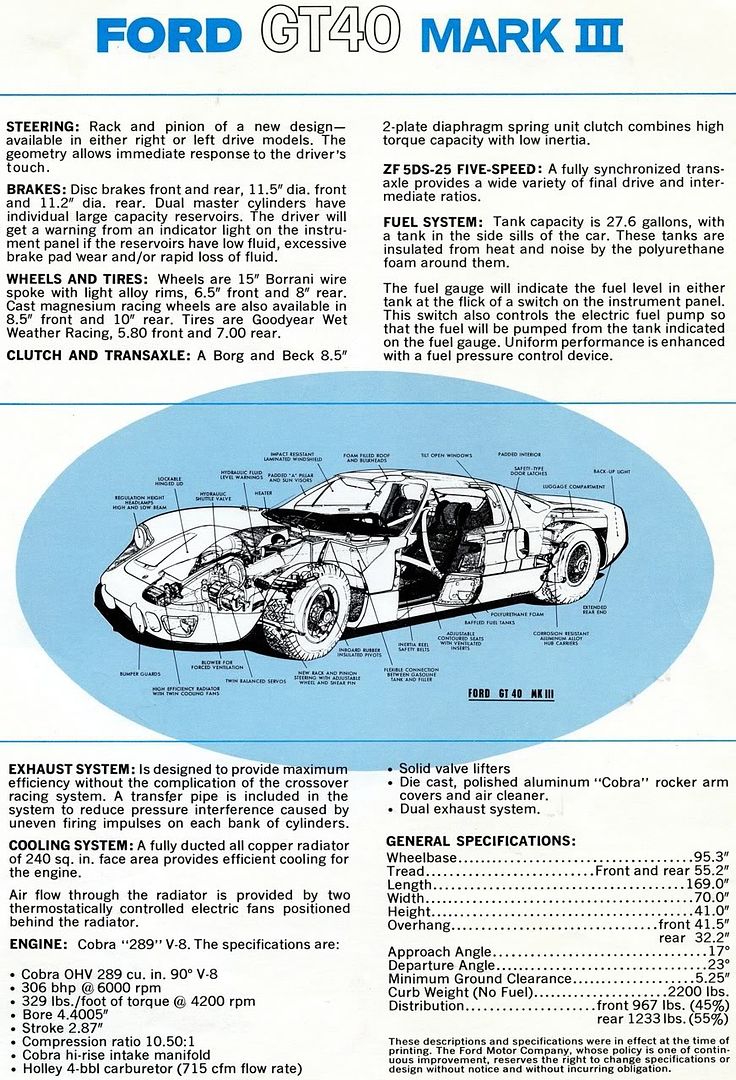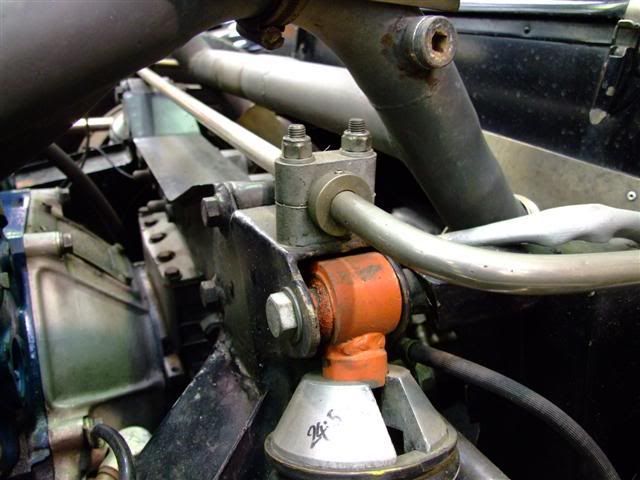You are using an out of date browser. It may not display this or other websites correctly.
You should upgrade or use an alternative browser.
You should upgrade or use an alternative browser.
1103
- Thread starter Boz40
- Start date
Looking forward to seeing more of 1103.
Seymour Snerd
Lifetime Supporter
Seymour Snerd
Lifetime Supporter
it is indeed two layers with the outer plate being part of the bracket with the bolt in beam going across the rear.
the thickness of both both layers together is 150 thou (3.8mm)
Thanks, Barry. May I assume that 1103 looks like 1107 in this area?
Jim Rosenthal
Supporter
Nice mention of your shop in the most recent number of OCTANE, did you see it?
:thumbsup: . i'm not in any pictures though.
the ally fuel tanks are out. i left that job to our panel beater. it was a bit of a fight as the tanks are sealed in with expanding foam. remarkably good condition inside the sills. just a tiny bit of surface rust and nothing more.
i'm quite suprised at the good condition everything seems to be in. there is no silt in the cooling pipes or engine. the master cylinders had virtually no wear and are not rotting from the inside out. the originals have been resealed and refitted to the pedal box.
the rear arches are nearly finished, the front has been repaired in various places and primed for paint. the monocoque will be stripped of paint very soon. i probably wont update this thread until 2012 now, and then it'll only be tantalising shots. once the Magazine features hit the shops then i'll put up loads of pictures not in the magazines.
thanks for the help so far. i shall keep coming back to check this forum and if anyone needs measurements/pictures of certain bits just let me know.
plus keep a look out for some early pictures of 1103 for me. thanks again.
the ally fuel tanks are out. i left that job to our panel beater. it was a bit of a fight as the tanks are sealed in with expanding foam. remarkably good condition inside the sills. just a tiny bit of surface rust and nothing more.
i'm quite suprised at the good condition everything seems to be in. there is no silt in the cooling pipes or engine. the master cylinders had virtually no wear and are not rotting from the inside out. the originals have been resealed and refitted to the pedal box.
the rear arches are nearly finished, the front has been repaired in various places and primed for paint. the monocoque will be stripped of paint very soon. i probably wont update this thread until 2012 now, and then it'll only be tantalising shots. once the Magazine features hit the shops then i'll put up loads of pictures not in the magazines.
thanks for the help so far. i shall keep coming back to check this forum and if anyone needs measurements/pictures of certain bits just let me know.
plus keep a look out for some early pictures of 1103 for me. thanks again.
Thanks Barry. We really appreciate all the pics of what must be described as an extraordinarily well-preserved original car.
Jim Rosenthal
Supporter
Did this car have alloy tanks from new? It's interesting, because the race cars had those bag tanks that had to be replaced every so often- I wonder if the good condition of the side sponsons had to do with the tanks being alloy, not rubber bladders. Could you post some of the insides of the sponsons, when you get a chance? Also, if you could put some up of the way they arranged the fuel pumps and fuel supply hoses- did Mark III cars have two tanks and the changeover switch, or did they set the fuel path up differently?

1103 has a mechanical fuel pump on the engine with an aircraft change over valve on the passanger side like the race cars. the switch on the dash just changes the the fuel gauge readings from each tank.
obviously the spec of 1103 is slightly different from the sales brochure but it does mention that the tanks are sealed in place with foam.
wont be able to get any pictures until next year now as i'm off work until the new year. just having some time out after a busy season. bit of a busmans holiday in a way as i'm hopefully getting a fair bit done to my own project which has taken too long but now i have somewhere to complete it
and if your interested it is a 1967 Honda S800 to which i'm squeezing a Honda S2000 engine into.

:wacko:
Oh, the poor little S800! That should give it a big fright!
Jim Rosenthal
Supporter
It will be a little rocket, is what it will be. Very cool.
Barry, thanks for posting that. In building my GT40, we were fortunate enough to find one of those Avro fuel valves for the car. Evidently they are hard to find. Mine is set up like you describe- the dash switch tells you the level in each tank, but you have to change over manually.
We're interested to see what you post in the New Year, and have a good holiday.
Barry, thanks for posting that. In building my GT40, we were fortunate enough to find one of those Avro fuel valves for the car. Evidently they are hard to find. Mine is set up like you describe- the dash switch tells you the level in each tank, but you have to change over manually.
We're interested to see what you post in the New Year, and have a good holiday.
Hi Barry
I always thought the change over fuel valve was from a Canberra bomber.
Is P1003 going to be at the Goodwood Revival or Festival of Speed this year? I remember getting evicted from Regents park in the 1970's when photographying this car.
Regards Allan
I always thought the change over fuel valve was from a Canberra bomber.
Is P1003 going to be at the Goodwood Revival or Festival of Speed this year? I remember getting evicted from Regents park in the 1970's when photographying this car.
Regards Allan
Jim Rosenthal
Supporter
I think those fuel valves were made in a lot of different versions for different British aircraft. I think they came in Spitfires, Gipsy Moths, and some others. Mine came from an aircraft parts supplier in the UK and was NOS, in its 1940s box, still sealed up. It is not exactly the same as the one in the Marriott car, but looks the same. My guess is that this was an easy part to buy on the surplus market in the 1960s, so that's what they used. One of the forum members has some of them and is having them refurbished, I think, but the one I bought is the only one I've seen for sale that I can recall. I got lucky.





now all the underseal has been cleaned off a little bit of rust has been found. they were only small perforations so not easy to spot.

should be painted by the begining of Feb. but you'll have to wait a few months before i post a picture of the whole car painted. i might show a few close ups though :thumbsup:
Once again thanks for this insight into the MK3.
Interesting that not only (obviously) missing the tunnel but also missing the lightening holes around that area. See for example AMGT40/1 from the racing icons site:
The more I see of 50 year old cars, the more I appreciate modern replicas like the RCR 40. At least if you are actually going to drive it.
I understand the appeal of heritage from an original, but in most ways, aren't the modern replicas actually better cars in terms of materials and construction methods?
I know, I know, it's a heresy. And while I appreciate people who are essentially acting in a curator role so we don't lose sight of the past, I still think the modern cars are probably better drivers.
And cost waayy less.
I understand the appeal of heritage from an original, but in most ways, aren't the modern replicas actually better cars in terms of materials and construction methods?
I know, I know, it's a heresy. And while I appreciate people who are essentially acting in a curator role so we don't lose sight of the past, I still think the modern cars are probably better drivers.
And cost waayy less.
Similar threads
- Replies
- 2
- Views
- 336
- Replies
- 12
- Views
- 1K


